#David Willcocks
Text
Passus duriusculus
Johann Sebastian Bach (1685 - 1750): Weinen, Klagen, Sorgen, Zagen, cantata BWV 12 su testo di Salomo Franck (forse) e Samuel Rodigast (n. 7); eseguita per la prima volta a Weimar il 22 aprile 1714. Paul Esswood, contraltista; Kurt Equiluz, tenore; Max van Egmond, basso; Tölzer Knabenchor, dir. Gerhard Schmidt-Gaden; King’s College Choir Cambridge, dir. David Willcocks; Leonhardt-Consort, dir.…
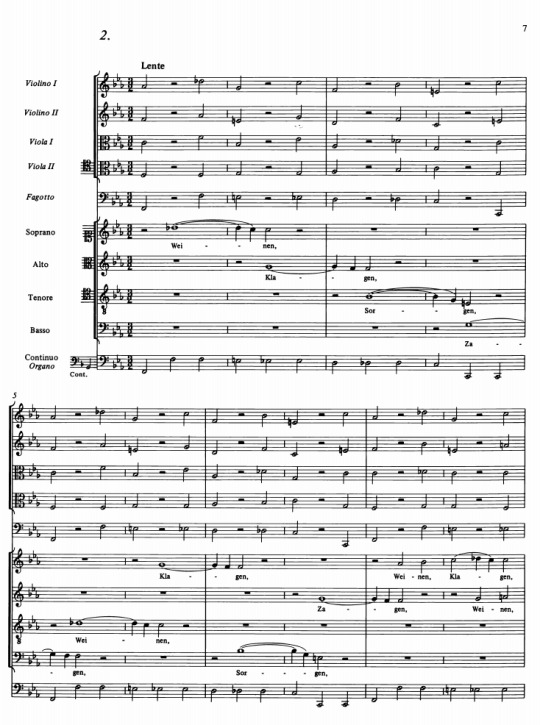
View On WordPress
#Alexander Wilhelm Gottschalg#Anton Grigor&039;evič Rubinštejn#Artur Aksenov#Blandine Ollivier#Catherine-Adelaide Méran#David Willcocks#Gerhard Schmidt-Gaden#Gustav Leonhardt#Johann Sebastian Bach#King&039;s College Choir Cambridge#Kurt Equiluz#Leonhardt-Consort#Max van Egmond#passus duriusculus#Paul Esswood#Salomo Franck#Samuel Rodigast#Tölzer Knabenchor#Thibaut Duret#Vladimir Horowitz
0 notes
Text
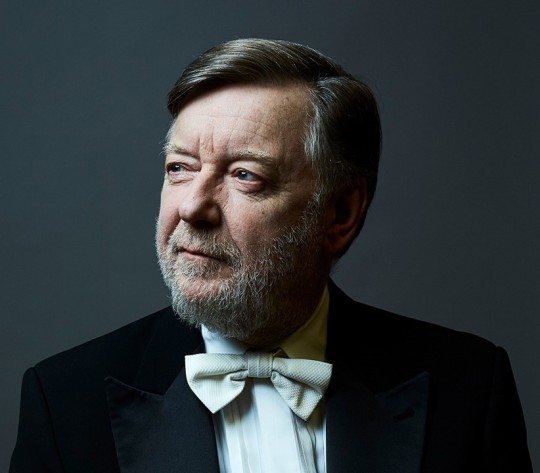
Sir Andrew Davis
One of Britain’s greatest conductors widely admired for leading the BBC Symphony Orchestra at the Proms
One of the most beloved and highly esteemed conductors of his generation, Sir Andrew Davis, who has died aged 80 of leukaemia, was a familiar presence on the podium, not least through his countless appearances at the BBC Proms in his capacity as chief conductor of the BBC Symphony Orchestra (1989-2000).
After Adrian Boult, his was the second longest tenure of the post in the history of the orchestra. During the same period he was also music director of Glyndebourne Opera (1988–2000), conducting works by Mozart, Janáček and Richard Strauss, among many others.
The sheer range of his repertoire was in fact one of the defining features of Davis’s career. Not only was he acclaimed as an empathetic interpreter of British music from Elgar and Vaughan Williams to Holst and Bliss, but he also had the ability to assimilate contemporary scores such as Michael Tippett’s The Mask of Time, Harrison Birtwistle’s The Mask of Orpheus, Nicholas Sackman’s Hawthorn or David Sawer’s Byrnan Wood, all of which were either introduced at the Proms or recorded. The Birtwistle was named record of the year at the Gramophone awards in 1987.
But as he showed season after season in the BBC post, Davis could bring both vitality and a discerning sense of idiom to almost any music. One recalls, almost at random, a 2015 concert featuring a sensuous account of Delius’s In a Summer Garden, followed by a lithe and muscular suite from Ravel’s erotic Daphnis et Chloé, the ecstatic choral shouts and shuddering climaxes leaving little to the imagination. The concert also included music by Carl Nielsen and a new work, Epithalamion, by Hugh Wood.
One of many highlights of his Proms appearances was his commanding premiere in 1998 of Elgar’s Third Symphony in the “elaboration” by Anthony Payne (effectively a performing version made from the composer’s sketches).
Another was his speech from the podium in 1992, delivered as a patter song to the tune of Gilbert and Sullivan’s “I am the very model of a modern major-general”, complete with witty rhymes and repartee with the delighted audience. The trick was repeated on the final night of the 2000 festival, his last as the orchestra’s chief conductor. On his arrival at the BBC Symphony Orchestra, the more truculent members of the ensemble had to be won over, but they were, by his genial humour and charm, as well as his purely musical talents.
He was also popular with soloists, not necessarily offering a radically new perspective of his own, but listening carefully to them to provide an ideal accompaniment. The pianist Stephen Hough said he had “the sharpest ear and the clearest stick”. Both on and off the podium Davis exuded bonhomie and affability. His concern as a conductor was always to create the conditions that enabled musicians to give of their best.
Born in Ashridge, Hertfordshire, he was the son of Robert Davis, a compositor, and his wife, Joyce (nee Badminton). Andrew began to learn the piano at the age of five and attended Watford grammar school. In 1959 he started organ studies with Peter Hurford and subsequently won an organ scholarship to King’s College, Cambridge, where he played under David Willcocks. He then studied conducting at the Accademia di S Cecilia, Rome, under Franco Ferrara, and in London with George Hurst. From 1966 to 1970 he was pianist, harpsichordist and organist with the Academy of St Martin in the Fields.
In 1970 he made his debut with the BBC Symphony Orchestra and in the same year was appointed assistant conductor of the BBC Scottish Symphony Orchestra. He then became principal guest conductor of the Royal Liverpool Philharmonic Orchestra (1974–77) and music director of the Toronto Symphony Orchestra (1975–88), whose stature he boosted with major tours of North America, Europe and Asia. In 1982, he helped establish the orchestra’s new home at Roy Thomson Hall, and advised on the construction of its organ.
Then came the posts at the BBC Symphony Orchestra and Glyndebourne. His debut at the latter had been in Strauss’s Capriccio (1973) and he was to become a noted exponent of the composer’s operas.
In 1989 he married the soprano Gianna Rolandi, whom he had met when she sang Zerbinetta under his baton first at the Metropolitan, New York, in 1984 and again at Glyndebourne in 1988.
On his retirement from the BBC in 2000 he moved to the US with Rolandi and their son, Edward, to take up the appointment of music director, until 2021, of the Lyric Opera of Chicago, where he conducted nearly 700 opera performances including Wagner’s Ring cycle (2004–05). A second cycle was planned for the 2019–20 season, but was never completed on account of the Covid pandemic. He additionally conducted orchestral concerts at the Lyric and free concerts at Millennium Park.
From 2012 to 2019, he also held the post of chief conductor of the Melbourne Symphony Orchestra, becoming conductor laureate, while continuing to live in the US.
In addition to his conducting, he made an orchestration of Handel’s Messiah, performing it with the Toronto orchestra, and of Berg’s Piano Sonata, op 1, and Passacaglia (Berg was a composer who inspired him, he once said, throughout his life). His own compositions included La Serenissima: Inventions on a Theme by Claudio Monteverdi (1980), Chansons Innocentes for children’s chorus and orchestra (1984) and Alice (2003) – settings of Lewis Carroll for mezzo-soprano, tenor and children’s chorus. At his death he was working on orchestrating some of JS Bach’s organ music.
During the pandemic lockdown he drew on his knowledge of the classics, gained as a student, to undertake an original translation of Virgil’s Aeneid. Though modest about his poetic abilities, he did comment that the experience was comparable to that of making music: “The manipulation of sonorities and rhythms and the search for ways of bringing to life the vividness of Virgil’s imagery and at times his great emotional power struck me as remarkably similar to the search that I have been engaged in all my life on the podium.”
His numerous recordings reflect the vast range of his repertoire, British and contemporary music looming large alongside Stravinsky, Strauss, Berlioz, Ives, Sibelius, Weill and the complete Dvořák symphonies. A 16-CD retrospective collection celebrating British composers on Teldec’s The British Line series was released by Warner Classics.
In 1991, he received the Royal Philharmonic Society/Charles Heidsieck music award. He was appointed CBE in 1992 and knighted in 1999.
Rolandi died in 2021. Davis is survived by Edward, a composer, singer and conductor.
🔔 Andrew Frank Davis, conductor, born 2 February 1944; died 20 April 2024
Daily inspiration. Discover more photos at Just for Books…?
5 notes
·
View notes
Text
yea, jeck, we greet thee
born this happy morning
jesdus to thee be glory given
WOOOOORD of the paper
newsie now appearing
o come let us adore him
o come let us adore him
o come let us adore him, jeck kelly
Oh Come All Ye Newsies, verse 4, arranged by David Willcocks
6 notes
·
View notes
Text
It’s Lessons and Carols week in many churches, especially in the Anglican communion. It’s the one time of year we anticipate his arrival.
Jesus, you might ask?
No.
David Willcocks.
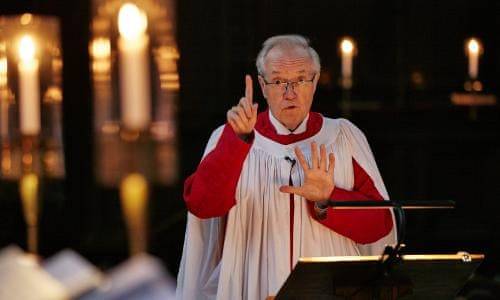
For he wrote the filthiest, fattest, most majestic organ chord of all time in his arrangement of “O Come All Ye Faithful”, that every chorister cannot help but put their entire ass into when it comes around.

4 notes
·
View notes
Text
"Miserere mei, Deus” by Gregorio Allegri
Gregorio Allegri (c. 1582-1652) was a late Renaissance composer, best remembered for his ‘Miserere’ for two choirs. Allegri began singing in San Luigi dei Francesi before joining the Sistine Choir in 1629. Renaissance music was built upon plainchants, and is characterised by polyphony, imitation, motets, superimpositions, and overlapping cadences that convey flow, expressiveness, and devotion. ‘Miserere’ exemplifies Renaissance polyphony—one choir of five voices sings a fauxbourdon of a plainchant for the Tonus peregrinus, while the other choir of four voices supplies with elaborations and cadenzas, forming a 9-part polyphony.
youtube
Sistine Codex of 1661
‘Miserere’ is an acapella performed exclusively during Holy Week in the Sistine Chapel for ages. The church forbade it from being transcribed, so while the original 1661 codex might not reflect the true composition, it reveals the secret ornamentation practice of the olden Sistine Chapel Choir.
The Sistine Chapel Choir is a permanent choir in the chapel that never sings with instrument accompaniments. In this historical recording, a group of voices sings the plainchant, and then a second group of voices responds with elaboration. This repeats four times, as Allegri intended. The two choirs are distinct—even without video, one could picture that the second choir is singing far away at another end of a massive room. While I appreciated the contrast as it dynamised the plainchant, the upper voices in the second choir had drowned out the lower voices, resulting in an “airiness”. Nonetheless, the voices were well-blended and captured the essence of Renaissance music—the melodies flowed smoothly with no fixed tempo, and the music was expressive, whereby the soft tenor solos sounded pleading, but the choir in tutti sounded haunting. ‘Miserere’ means "Have mercy on me, O God" in Latin; fittingly, the acoustics of the chapel allowed their voices to echo, amplifying their devotion to God.
youtube
King’s College Choir 1963
The world-famous Choir of King’s College, Cambridge sings in the King’s College Chapel. This is one of the first modern recordings, conducted by David Willcocks and featured soloist Roy Goodman. It differs vastly from the original—during the 19th century, ‘Miserere’ was incorrectly transcribed, transposing the solo choir up a fourth.
Although sung in English, this version still preserved the smooth melodies and distribution of rubato in the original 1661 codex. However, it is more textured, dynamic, and exciting. The articulation of words is clearer; the tenors used a higher vocal placement to produce a more lightweight sound; the basses were audibly growing louder and softer, shaping a slow push-and-pull melody; the boy sopranos pierced through with their resonance and agility in the ornamented lines. Nevertheless, the pièce de resistance is boy treble Goodman’s breath-taking high notes during the second half of the four-voice falsobordone. Though his entry was a little shaky, the transition to the “top C” note was slick and precise, with a slight crescendo and close-to-none sliding. It is astonishing how Goodman sustained those notes—four times—without sounding strained; his pure and aethereal voice quality cannot be replicated by a female soprano. The high notes are my favourite part in contemporary ‘Miserere’, and I have yet to hear one as moving as Goodman
youtube
Ofra Harnoy
Ofra Harnoy is a widely celebrated classical cellist with over 40 solo albums. This recording is part of her ‘Back to Bach’ album, filled with Baroque favourites. Harnoy’s vision was to design a large cello ensemble by herself. To attain that effect, she harnessed the power of technology to overdub and produce multi-tracks.
I thought Harnoy’s work was innovative—the mixing and mastering were done so well that with eyes closed, her arrangement did seem like a grand cello ensemble. The tempo was a bit slower than the original 1661 codex and King’s College Choir 1963 recording, but that allowed the strings to ring longer, hence extending the crescendos and decrescendos. Additionally, the lower parts are more discernible than in the previous recordings. The rich bass and use of vibrato dramatised the music, creating a hauntingly beautiful and poignant experience. The high notes did not overpower, unlike in the King’s College Choir 1963 version, hence highlighting the polyphony.
One might think that Harnoy made her cello sing, but I felt that she transformed ‘Miserere’ into a cello piece. My only critique is that all the verses should have been recorded, to demonstrate how each verse differs in the embellishments—for example, the appoggiaturas sung by the higher sections.
youtube
Montechait
Montechait is a YouTuber who does piano cover videos and arrangements. He played on a Studiologic SL88 Studio keyboard, then produced and edited the audio using Pianoteq and Cubase software.
The pitches were not the most precise in the original 1661 codex and King’s College 1963 recordings. Hence, the pitch-perfect keyboard demonstrated how the melodies could sit with one another to deliver chords that assert gloom. I enjoyed that the ending verse was in forte, emphasising the volume of a 9-part polyphony. But this performance lacked expressiveness, which is quintessential to Renaissance music. Despite Pianoteq being one of the greatest virtual instruments that simulate the playability of an acoustic instrument, the recording had a largely manufactured sound. Furthermore, the piano is limited in the expressive shaping of notes as it does not offer dynamic nuance or vibrato.
I learnt that every performer has a unique story to tell in ‘Miserere’—whether it is of worship by the Sistine Codex of 1661, of tradition by the King’s College Choir, of beauty by Ofra Harnoy’s soul-stirring cello, or melancholy by Montechait’s solemn keyboard. In my opinion, the key change from G minor to C minor—due to scribal error—echoes the famous saying: “There are no mistakes, just happy accidents.” ~Bob Ross.
#music appreciation#critique#critic#school assignment#essay#student#Miserere mei deus#Gregorio Allegri#late renaissance#choir#song#church#choral#Sistine Codex of 1661#King’s College Choir 1963#Ofra Harnoy#Montechait#classical music#youtube#music#singapore#Youtube#roy goodman
2 notes
·
View notes
Text
you guys don’t even get it
this shit makes me go nuts
1 note
·
View note
Link
#CarnegieHall#EdwardAKliszus#GeorgeFridericHandel#Handel'sMessiah#KentTritle#Messiah#OratorioSocietyofNewYork
0 notes
Video
youtube
Sussex Carol (David Willcocks) | Carols from King's 2021
0 notes
Text
youtube
George Dyson - To Music
Choir: Royal College of Music Chamber Choir, Conductor: David Willcocks
1 note
·
View note
Text
KEY PRE-PRODUCTION MEETINGS:
1] Discussed which film scene we were doing, general plans for if we thought it was possible for us to achieve it.
2] We confirmed all our production roles in the film. Beginning to plan WHERE to film and we settle a date to do a recce.
3] We conduct recce, confirm locations. There were some issues finding somewhere where we could film the shot with the harsh spotlight but eventually found something we could definitely make use of.
4] Grouped up to discuss what pre-production documents we all had to do. This mostly went okay, however, I was unaware that I had to fill in the details of visual breakdown which created a short delay for submitting to documents. Nothing hugely impactful occurred because of it.
5] There were a lot of problems that occurred with booking equipment. Here were the two biggest problems: Booking the equipment was impossible for anyone during a certain period due to maintenance, and there was very little equipment left as it was almost all booked out. After a long discussion, the only solution was to film all our film projects (including the film for our Film Narrative class) within a 72 hour period very close to the deadline. It could’ve been worse as the schedule still allowed for 4-5 days of editing but it only left 1.5 days of editing for our other film. There was a lot of rescheduling and making sure all the crew and actors could make the dates as they were the (pretty much) the only days left available to film where we could have all the equipment we wanted for our film.
6] This last call was key as it was our final call before we started shooting the next day. We made sure everyone had what they were required to bring (props, AA batteries, certain pieces of costume, etc). And we also made sure that everyone knew where and when they had to be each day so a detailed plan of each day was created to make sure everybody knows. We almost had an issue concerning where and who could store the equipment overnight but we eventually came up with a solution. Overall, apart from booking the equipment, most problems were easily fixable and didn’t cause many issues.
LOCATION SHOTS:
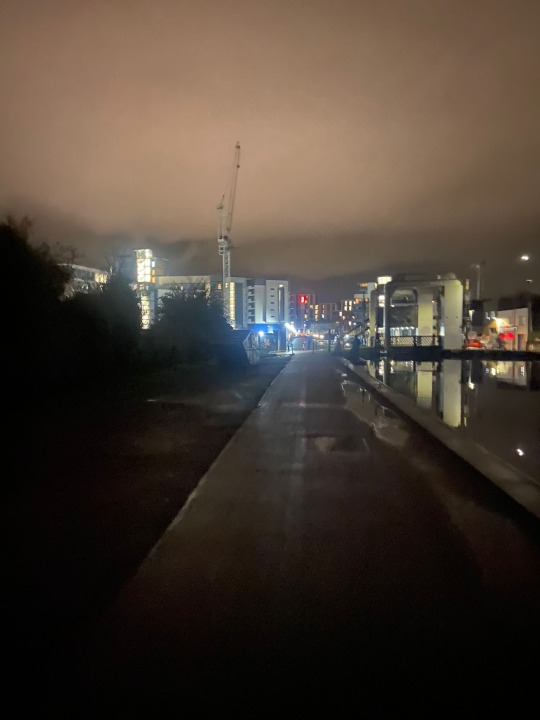
SHOTLIST:

VISUAL BREAKDOWN:
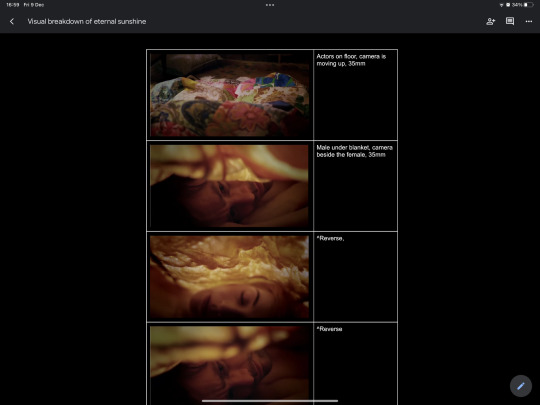



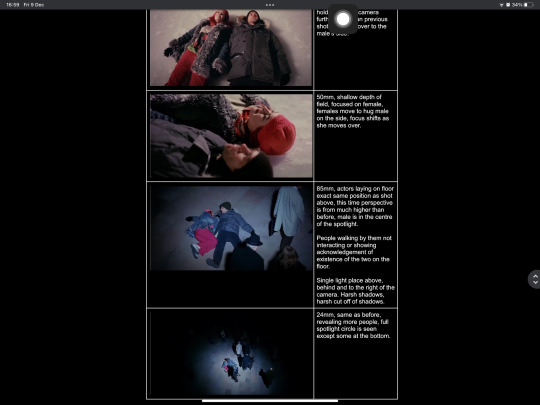
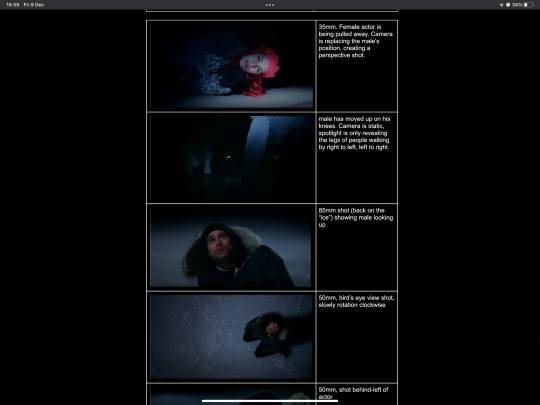

PRODUCTION SCHEDULE (We also conducted a group call to make sure everyone understood the schedule):
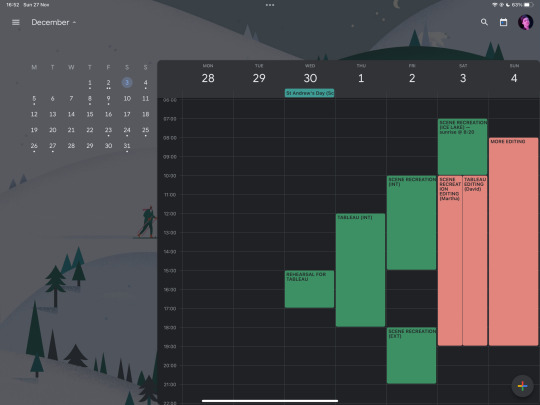
CREW LIST AND CREW ROLES:
David Puchir: Director, Editor
Nicolas Goldstraw: Producer, Cinematographer
Martha Podmore: Editor, Lighting
Maral Rahmani: Sound
Mary Peck: Assistant Camera
Annabelle Rand: Production Designer, Assistant Director
ACTORS:
Ellie Willcocks: Clementine
Cameron Broadley: Joel
PROPS AND COSTUME:
- Quilt
- Pillow
- Baby picture of actress
- Baby doll
- Other doll-like toys
- Winter jackets with fur
- Gloves (black)
- Hats (Red for Clementine, Black for Joel)
- Graphic Jumper
- Leopard print (blanket, scarf. Largest surface area possible)
- Some sort of red coloured bottoms for Clementine. Black bottoms for Joel.
KIT LIST:
Black Magic Pro 6K Camera
Batteries for camera
Card reader
Matte box and Vocas Follow Focus
Heavyweight Tripod
Shoulder Rig
4 Rotolight NEO 2 LEDs (with barn-doors)
2 small LED panels
Coloured gels for lights (specifically yellow)
Light diffusers (filters)
Boom Pole
Boom Microphone
Sound Mixer
Batteries for sound equipment
On-Camera Shotgun Mic
Slate and whiteboard pen
Lens kit (24mm, 50mm, 85mm)
Variable lens (18-35mm)
650w Sachtler Kit (Halogen Lights)
AA batteries (some come with the kit, will need extra just in case for the exterior shots)
0 notes
Text
Tagged by @natsuzora - thanks!
List 10 songs from shuffle, tag 10 people.
Maid on the Shore - The Once. Hnnng, I miss NL so much.
Any Day Now - Fiddler on the Roof soundtrack. Aww, Perchik.
How Firm a Foundation - Scottish Festival Singers. For someone who is profoundly atheist, I have a surprising amount of sacred music. Also, St. Denio is the only tune I will accept for How Firm a Foundation, and I will die on this hill.
Tanz der Vampire finale - Hamburg cast, I believe? Well, that's a bit of mood whiplash from the previous song. But also it fucking slaps.
Wild Mountain Thyme - Kenneth McKellar. OK, if you haven't heard Kenneth McKellar's voice, do yourself a favour and look him up. Especially if you like folk songs, which I very, very much do.
The Geek - Wir sind Helden. I'm weirdly attached to this song and also to WsH? It's catchy.
O Come All Ye Faithful - Choir of King's College, Cambridge. OK, two things about this one: 1) If my collection of choral hymns is bigger than most people who know me would expect, my collection of Christmas choral music is bordering on ludicrous. 2) I love this shirt kind of a lot. That right there is undoubtedly the secret chord that David (Willcocks) played and it pleased the Lord.
Ol' Man River - Paul Robeson. True story: Showboat was the first musical I ever saw on stage. I was 8, and I knew every word of every song.
English Folk Song Suite - I'm actually not sure who's playing/conducting the version that I have, but I can never listen to it without falling back in love with Vaughan Williams.
Personent Hodie - Utopia Chamber Choir. Of all the things that you'd expect might be mistaken for the beginning of a Queen song, Personent Hodie is possibly at the absolute bottom of the list, but listen to this and tell me you didn't for half a second think they were about to launch into We Will Rock You. Seriously.
I never know who to tag in these things. If you feel like doing it then tag - you're it.
#look i never said i have good musical taste ok?#in fact if you ask my music prof father i have abysmal taste#but at this point i just own it and like what i like#music#taggy things
1 note
·
View note
Text
I got the #lyrics for "Komm, Jesu, komm, BWV 229 (1989 - Remaster): Drum schleiß ich mich in deine Hände" by Johann Sebastian Bach feat. Choir of King's College, Cambridge & Sir David Willcocks on Musixmatch https://www.musixmatch.com/lyrics/Johann-Sebastian-Bach-Choir-of-King-s-College-Cambridge-Sir-David-Willcocks/Komm-Jesu-komm-BWV-229-1989-Remaster-Drum-schlei%C3%9F-ich-mich-in-deine-H%C3%A4nde?utm_source=application&utm_campaign=api&utm_medium=musixmatch-android%3A552993462
0 notes
Video
youtube
ADESTE FIDELES
NEW ARRANGEMENT FROM TAMBURITZA PUBLICATIONS...! This video shows the full score for song "ADESTE FIDELES" - arranged for mixed choir and tamburitza orchestra. Authors: John Francis Wade (1711.-1786.); ARR. Sir David Willcocks; Transcription for tamburitzas: Zlatoje Pajčić
0 notes
Video
youtube
Blogmas #1 / Our annual Blogmas has begun here at Musica in Extenso! As usual, I’m starting things off with a personal favorite. Years ago, when I shared an apartment in the Inwood neighborhood at the tip of Manhattan, I usually had the place to myself over Christmas. One of the local TV stations would play choral performances on repeat, late into the night, and I had a personal ritual of sitting up alone in the dark with just a few candles to light the room, soaking in the music. Carols from the King’s College Choir were always included, and I became very attached to some of the versions they sang most, including Sir David Willcocks’s arrangement of “Ding Dong! Merrily on High,” from a French tune composed by Jehan Tabourot with lyrics by George Ratcliffe Woodward. The bright joyfulness of this carol seems like exactly what we need most right now during this very strange holiday season.
More to come from both our regular bloggers and a host of special guests over as our two-week Blogmas continues! - Melinda Beasi
#blogmas#christmas#carols#christmas carols#king's college choir#carols from king's#david willcocks#jehan tabourot#george ratcliffe woodward#holidays#personal stories#choral music#traditional music#choir#classical music#musica in extenso
7 notes
·
View notes
Photo


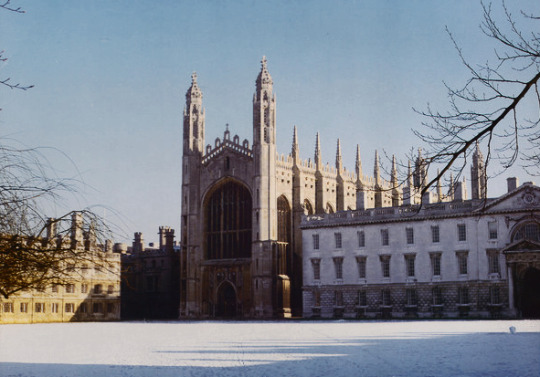
The Choir of King’s College, Cambridge & Sir David Willcocks - A Festival of Lessons & Carols
London Records / Argo
PIctured: 1978, 1959, 1985
#The Choir of King's College#Cambridge#Sir David Willcocks#A Festival of Lessons & Carols#London Records#Argo#1978#1959#1985#classical#choral
27 notes
·
View notes
Video
youtube
The Galaxy Brain Garbage of Gaia
#gaia#gaiatv#god i remember this fucking stuff#i used to watch some guy named david gayman or something idk i dont remember#it was very uh. bad. i absorbved nothing from it bc he wasnt saying anything really relevant#oh wait his name was david willcock i think#heh
0 notes